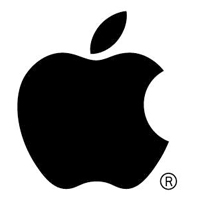Mac Event Expectation
Oct 21, 2013, by admin
Last week Apple sent out invitations for a launch event on 22 October, promising that the company still has “a lot to cover” after the launch of the iPhone 5s and 5c.and tomorrow The event will take place at the Yerba Buena Center for the Arts in San Francisco, with a 10 AM PDT kick-off time,
Here’s a breakdown of what we expect to possibly see Tomorrow, and how likely it is we’ll see it.
ipad 5
There’s also the possibility that the new iPads will include a bump in memory (the current options are 32GB, 64GB and 128GB) but this is by no means a given. Apple seems to have a curious aversion to beefing up their flash storage, with the hoped-for 128GB iPhone 5s never appearing (although this might be to protect that utility of large-capacity iPods).
ipad mini
Pad mini will indeed get a Retina upgrade, doubling pixel density (which will in fact make it even sharper than the Retina iPad 4th generation, thanks to the smaller screen). To make up for that, the small iPad is reportedly going to gain some weight: around 0.3 mm, according to the latest. That would be about half the extra weight the third-generation iPad had to put on over the iPad 2 when it gained Retina powers, and in both cases, the reason for any increase would be to cram a larger battery within the shell.
MacBook Pro
The iMac and the MacBook Air have already made the jump to Intel’s new Haswell processors, and it’s likely tomorrow will be the turn of the MacBook Pro (other significant upgrades for Apple’s laptops aren’t really expected).
Although ‘Haswell’ is probably just a meaningless catchword to most consumers, the chip behind the name offers significant benefits. It’s the latest generation of Intel’s core processor, but it’s an upgrade that has focused on efficiency rather than processing power.
For the consumer this means longer battery life and quieter laptops (less power consumptions means less heat which means less cooling fans blasting air noisily over your system)
New Mac Pro
Apple’s new Mac Pro isn’t a secret, since Apple made the unusual move of announcing it well before its release back in June at its annual Worldwide Developers Conference. But the professional-level desktop OS X computer that replaces the aging aluminum model still hasn’t received an official release date or price.
The redesigned Mac Pro bears little resemblance to the machine it’s replacing: a smooth black cylinder, taking up about 1/4 of the space of the old version, is all that remains. But that diminutive canister belies impressive specs under the hood, as Apple has put dual workstation GPUs capable of supporting multiple 4K displays, an Intel Xeon E5 processor with up to 12 cores available, much faster RAM and more inside. It’s all designed around a heat-dissipating center with a single fan, and the focus is on external expansion via Thunderbolt 2, USB 3, Ethernet and HDMI, rather than on internal customizability like with the old model.
Apple has said only that it would ship in “fall,” while also revealing it would be manufactured in the U.S. We’ve heard that it could start selling in November, according to the latest reports. No word yet on price, but expect it to be expensive, as this is definitely aimed at those with professional-level demands.
OS X Mavericks
Apple’s latest OS is just about ready to ship, having hit GM status in the pre-release developer builds recently. We’ve also heard that Apple has asked developers to start submitting apps for Mavericks. Expect it to ship in time for the arrival of new Retina MacBook Pros, if not before, and as always, look for Apple to offer no-charge upgrade offers for people who’ve just recently bought new Macs, including the refreshed iMac.
The price on OS X updates dropped from $29.99 for OS X Lion, to $19.99 for OS X Mountain Lion, so it’s possible we could see another drop, but Snow Leopard and Lion retained the same pricing, so Apple could easily keep the $20 fee, since it’s already quite low as it is.
To get more updates like the page Bugtreat Technologies . to get updates of our web templates like the page cs cart templates


